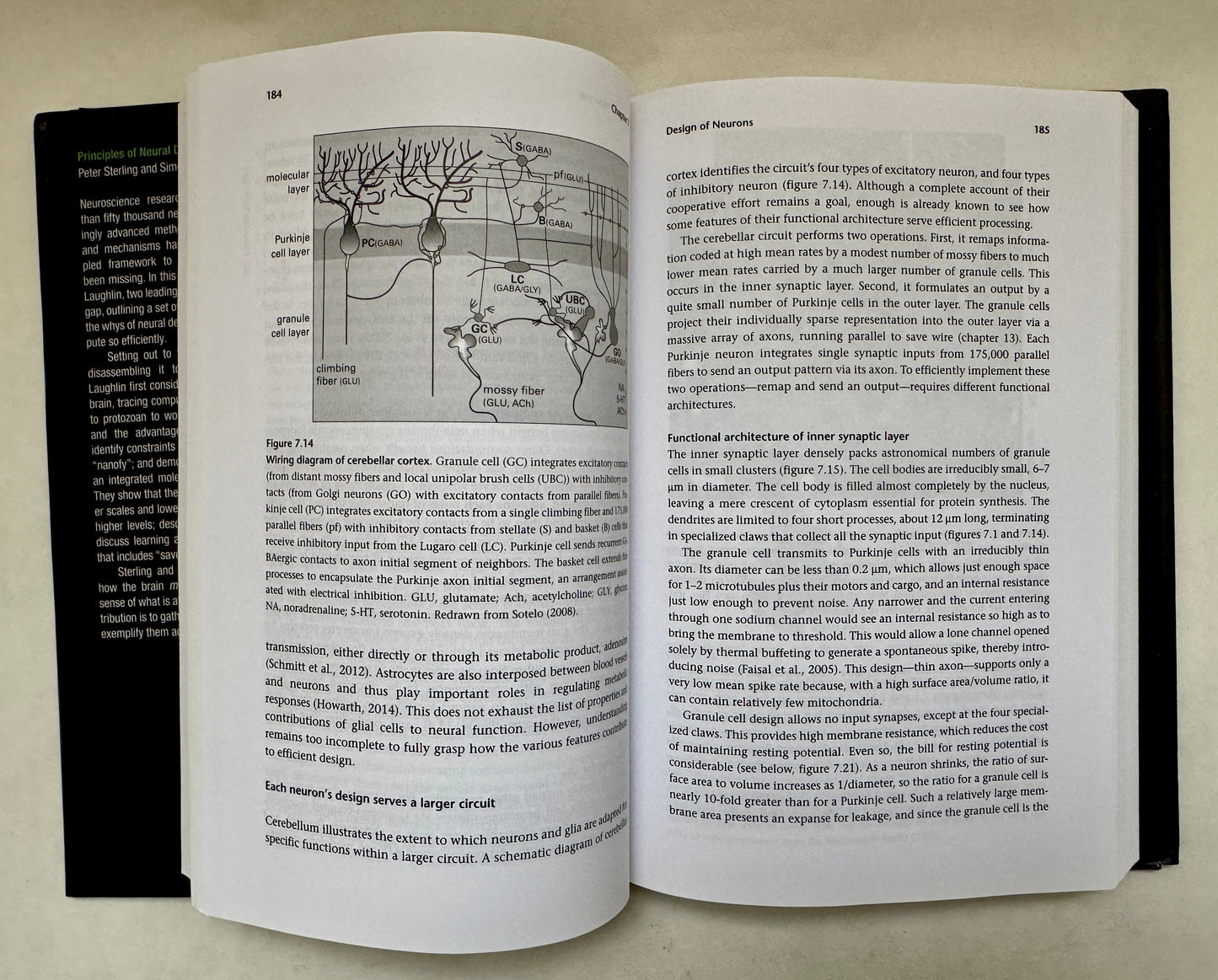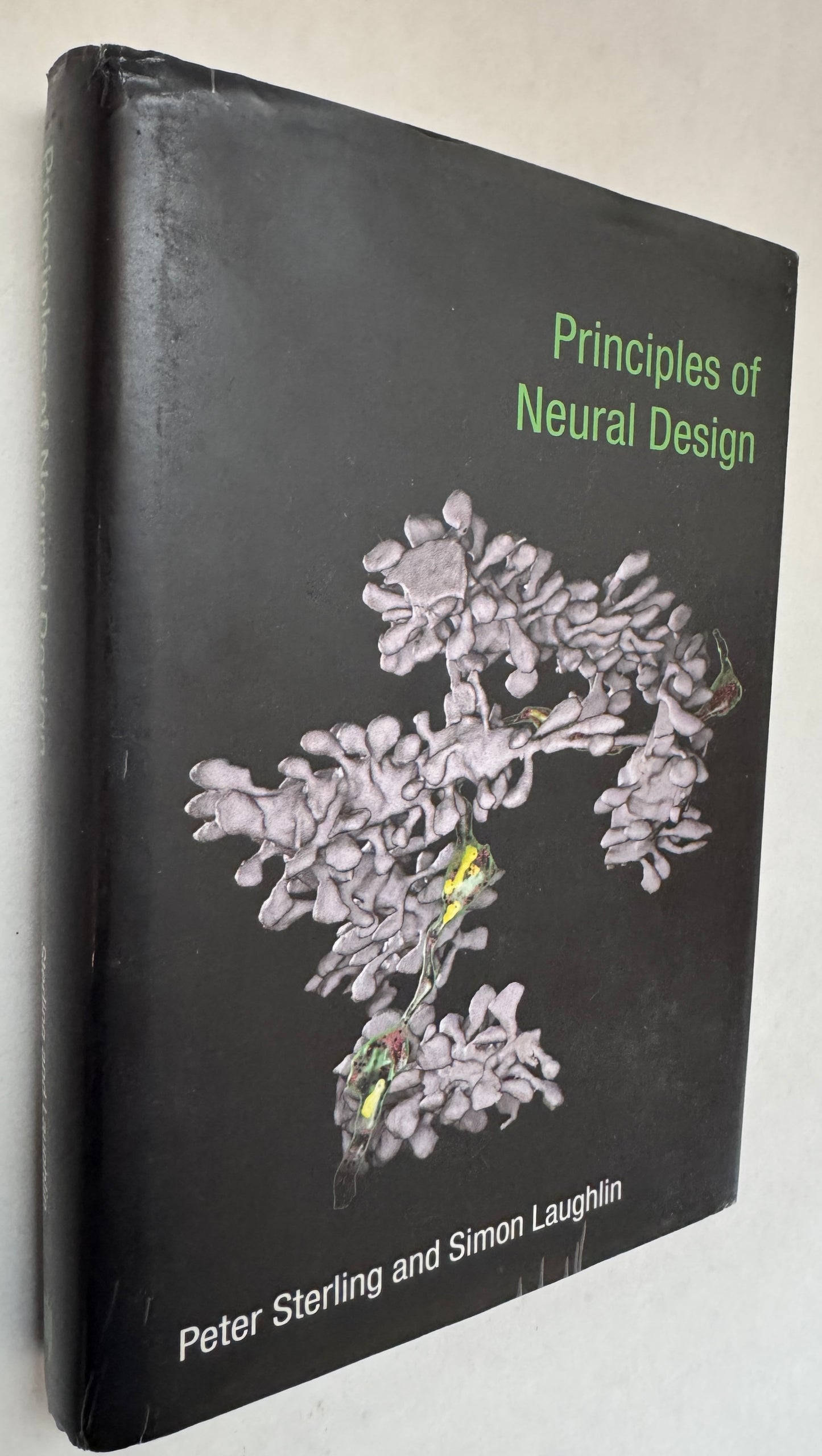Sterling, Peter; Laughlin, Simon
Principles of Neural Design
Principles of Neural Design
No se pudo cargar la disponibilidad de retiro
Massachusetts: The MIT Press, Cambridge, 2015. First ed., first printing (full number line). Large octavo in black, color illus jacket; xxiii, 542 pages: illustrations; 24 cm About near fine in near fine(-) jacket. Now in archival mylar. Shows very minor signs of exrternal wear. Biinding tight; pages free of markings. . Hardcover. ISBN: 9780262028707, 9780262327312
Scarec in hardcaover. "Neuroscience research has exploded, with more than fifty thousand neuroscientists applying increasingly advanced methods. A mountain of new facts and mechanisms has emerged. And yet a principled framework to organize this knowledge has been missing. In this book, Peter Sterling and Simon Laughlin, two leading neuroscientists, strive to fill this gap, outlining a set of organizing principles to explain the whys of neural design that allow the brain to compute so efficiently. Setting out to "reverse engineer" the brain--disassembling it to understand it--Sterling and Laughlin first consider why an animal should need a brain, tracing computational abilities from bacterium to protozoan to worm. They examine bigger brains and the advantages of "anticipatory regulation"; identify constraints on neural design and the need to "nanofy"; and demonstrate the routes to efficiency in an integrated molecular system, phototransduction. They show that the principles of neural design at finer scales and lower levels apply at larger scales and higher levels; describe neural wiring efficiency; and discuss learning as a principle of biological design that includes "save only what is needed." Sterling and Laughlin avoid speculation about how the brain might work and endeavor to make sense of what is already known. Their distinctive contribution is to gather a coherent set of basic rules and exemplify them across spatial and functional scales."--Publisher's descriptionContents: What engineers know about design. Why an animal needs a brain. Why a bigger brain?. How bigger brains are organized. Information processing: from molecules to molecular circuits. Information processing in protein circuits. Design of neurons. How photoreceptors optimize the capture of visual information. The fly lamina: an efficient interface for high-speed vision. Design of neural circuits: recoding analogue signals to pulsatile. Principles of retinal design. Beyond the retina: pathways to perception and action. Principles of efficient wiring. Learning as design/design of learning.






